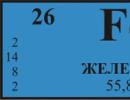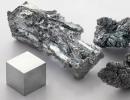Birth of stars presentation. Presentation Topic: Birth and evolution of stars. The greater the mass of a star, the faster hydrogen burns out, and the heavier elements can be formed in the process of thermonuclear fusion in its depths. At a later stage of evolution, when
The universe is made up of 98% stars. They are also the main element of the galaxy. “Stars are huge balls of helium and hydrogen, as well as other gases. Gravity pulls them in, and the hot gas pressure pushes them out, creating balance. The energy of a star is contained in its core, where every second helium interacts with hydrogen.”
The life path of the stars is a complete cycle - birth, growth, a period of relatively calm activity, agony, death, and resembles the life path of an individual organism. Astronomers are unable to trace the life of a single star from beginning to end. Even the shortest-lived stars exist for millions of years - longer than the life of not only one person, but of all mankind. However, scientists can observe many stars at various stages of their development - just born and dying. Based on numerous stellar portraits, they are trying to reconstruct the evolutionary path of each star and write its biography.


Regions of star formation. Giant molecular clouds with masses greater than 105 solar masses (they are known more in the Galaxy) The Eagle Nebula, 6000 light-years away, is a young open star cluster in the constellation Serpens, dark regions in the nebula are protostars


Gravitational contraction Compression is a consequence of gravitational instability, Newton's idea. Jeans later determined the minimum size of clouds in which spontaneous contraction can begin. A rather effective cooling of the medium takes place: the released energy of gravity goes into infrared radiation, which goes into outer space.

Protostar As the density of the cloud increases, it becomes opaque to radiation. The temperature of the inner regions begins to rise. The temperature in the interior of a protostar reaches the thermal threshold nuclear reactions synthesis. Compression stops for a while.

A young star has entered the main sequence of the H-R diagram, the process of hydrogen burnout has begun - the main stellar nuclear fuel is practically not compressed, and the energy reserves no longer change slow change chemical composition in its central regions, due to the conversion of hydrogen into helium, the star passes into a stationary state



Star mass 

1.4 solar masses: gravitational compression forces are very high density of matter reaches a million tons per cm3 huge energy is released - 10 ^ 45 J temperature - 10 ^ 11 K supernova explosion most of the star is ejected into space" title = "(!LANG: mass stars > 1.4 solar masses: gravitational compression forces are very high density of matter reaches a million tons per cm3 huge energy is released - 10 ^ 45 J temperature - 10 ^ 11 K supernova explosion most of the star is ejected into space" class="link_thumb"> 14 !} star mass > 1.4 solar masses: gravitational compression forces are very high density of matter reaches a million tons per cm3 huge energy is released - 10 ^ 45 J temperature - 10 ^ 11 K supernova explosion most of the star is ejected into outer space at a speed of km / s neutrino streams cool the core of a star - a neutron star 1.4 solar masses: gravitational compression forces are very high the density of matter reaches a million tons per cm3 huge energy is released - 10 ^ 45 J temperature - 10 ^ 11 K supernova explosion most of the star is ejected into space "\u003e 1.4 solar masses: forces gravitational compression is very high density of matter reaches a million tons per cm3 huge energy is released - 10 ^ 45 J temperature - 10 ^ 11 K supernova explosion most of the star is ejected into outer space at a speed of 1000-5000 km / s neutrino flows cool the core of the star - Neutron star "> 1.4 solar masses: gravitational compression forces are very high density of matter reaches a million tons per cm3 huge energy is released - 10 ^ 45 J temperature - 10 ^ 11 K supernova explosion most of the star is ejected into space" title = "(! LANG: star mass > 1.4 solar masses: gravitational contraction forces are very high density of matter reaches a million tons per cm3 huge energy is released - 10^45 J rate erature - 10 ^ 11 K Supernova explosion most of the star is ejected into space"> title="star mass > 1.4 solar masses: gravitational compression forces are very high density of matter reaches a million tons per cm3 huge energy is released - 10 ^ 45 J temperature - 10 ^ 11 K supernova explosion most of the star is ejected into space"> !}

2.5 solar masses gravitational collapse gravitational collapse star turns into a black hole star turns into a black hole" title="(!LANG:star mass > 2.5 solar masses gravitational collapse gravitational collapse star turns into a black hole star turns into a black hole" class="link_thumb"> 19 !} star mass > 2.5 solar masses gravitational collapse gravitational collapse star turns into a black hole star turns into a black hole 2.5 solar masses gravitational collapse gravitational collapse star turns into a black hole star turns into a black hole "> 2.5 solar masses gravitational collapse gravitational collapse star turns into a black hole" star turns into a black hole "> 2.5 solar masses gravitational collapse gravitational collapse star collapses into a black hole star turns into a black hole" title="(!LANG: star mass > 2.5 solar masses gravitational collapse gravitational collapse star turns into a black hole star turns into a black hole"> title="star mass > 2.5 solar masses gravitational collapse gravitational collapse star turns into a black hole star turns into a black hole"> !}

Content
- The birth of the stars
- Star life
- White dwarfs and neutron holes
- Black holes
- The death of the stars
- To acquaint with the action of gravitational forces in the Universe, which lead to the formation of stars.
- Consider the process of evolution of stars.
- Give the concept of the spatial velocity of stars.
- Describe the physical nature of stars.
- Space is often called airless space, believing it to be empty. However, it is not. In interstellar space there is dust and gas, mainly helium and hydrogen, with the latter much more abundant.
- There are even entire clouds of dust and gas in the universe that can collapse under the influence of gravitational forces.
- In the process of compression, part of the cloud will heat up and condense.
- If the mass of the compressing matter is sufficient for nuclear reactions to begin to occur inside it during the compression process, then a star is obtained from such a cloud.
- Each "newborn" star, depending on its initial mass, occupies a certain place on the Hertzsprung-Russell diagram - a graph, on one axis of which the color index of the star is plotted, and on the other - its luminosity, i.e. the amount of energy emitted per second.
- The color index of a star is related to its temperature. surface layers- the lower the temperature, the redder the star, and the greater its color index.
- In the process of evolution, stars change their position on the "spectrum-luminosity" diagram, moving from one group to another. A star spends most of its life on the Main Sequence. To the right and up from it are both the youngest stars and stars that have advanced far along their evolutionary path.
- The lifetime of a star depends mainly on its mass. According to theoretical calculations, the mass of a star can vary from 0,08 before 100 solar masses.
- The greater the mass of a star, the faster hydrogen burns out, and the heavier elements can be formed in the process of thermonuclear fusion in its depths. At a late stage of evolution, when helium burning begins in the central part of the star, it descends from the Main Sequence, becoming, depending on the mass, a blue or red giant.
- But there comes a moment when the star is on the verge of a crisis, it can no longer produce the necessary amount of energy to maintain internal pressure and resist the forces of gravity. The process of uncontrollable compression (collapse) begins.
- As a result of the collapse, stars with a huge density (white dwarfs) are formed. Simultaneously with the formation of a superdense core, the star sheds its outer shell, which turns into a gas cloud - a planetary nebula and gradually dissipates in space.
- A star of greater mass can shrink to a radius of 10 km, turning into a neutron star. One tablespoon of a neutron star weighs 1 billion tons! The last stage in the evolution of an even more massive star is the formation of a black hole. The star shrinks to such a size that the second cosmic velocity becomes equal to the speed of light. In the region of a black hole, space is strongly curved, and time slows down.
- The formation of neutron stars and black holes is necessarily associated with a powerful explosion. A bright point appears in the sky, almost as bright as the galaxy in which it flared up. This is a supernova. The references found in ancient chronicles about the appearance of the brightest stars in the sky are nothing more than evidence of colossal cosmic explosions.
- The star loses its entire outer shell, which, expanding at high speed, dissolves without a trace in the interstellar medium after hundreds of thousands of years, and before that we observe it as an expanding gaseous nebula.
- For the first 20,000 years, the expansion of the gas envelope is accompanied by powerful radio emission. During this time, it is a hot plasma ball that has a magnetic field that holds the high-energy charged particles formed in the supernova.
- The more time has passed since the explosion, the weaker the radio emission and the lower the plasma temperature.
slide 1
slide 2
 The universe is made up of 98% stars. They are also the main element of the galaxy. “Stars are huge balls of helium and hydrogen, as well as other gases. Gravity pulls them in, and the hot gas pressure pushes them out, creating balance. The energy of a star is contained in its core, where every second helium interacts with hydrogen.”
The universe is made up of 98% stars. They are also the main element of the galaxy. “Stars are huge balls of helium and hydrogen, as well as other gases. Gravity pulls them in, and the hot gas pressure pushes them out, creating balance. The energy of a star is contained in its core, where every second helium interacts with hydrogen.”
slide 3
 The life path of the stars is a complete cycle - birth, growth, a period of relatively calm activity, agony, death, and resembles the life path of an individual organism. Astronomers are unable to trace the life of a single star from beginning to end. Even the shortest-lived stars exist for millions of years - longer than the life of not only one person, but of all mankind. However, scientists can observe many stars at various stages of their development - just born and dying. Based on numerous stellar portraits, they are trying to reconstruct the evolutionary path of each star and write its biography.
The life path of the stars is a complete cycle - birth, growth, a period of relatively calm activity, agony, death, and resembles the life path of an individual organism. Astronomers are unable to trace the life of a single star from beginning to end. Even the shortest-lived stars exist for millions of years - longer than the life of not only one person, but of all mankind. However, scientists can observe many stars at various stages of their development - just born and dying. Based on numerous stellar portraits, they are trying to reconstruct the evolutionary path of each star and write its biography.
slide 4

slide 5
 Regions of star formation. Giant molecular clouds with masses greater than 105 solar masses (more than 6,000 of them are known in the Galaxy) The Eagle Nebula, 6000 light-years away, is a young open star cluster in the constellation Serpens, dark regions in the nebula are protostars
Regions of star formation. Giant molecular clouds with masses greater than 105 solar masses (more than 6,000 of them are known in the Galaxy) The Eagle Nebula, 6000 light-years away, is a young open star cluster in the constellation Serpens, dark regions in the nebula are protostars
slide 6
 The Orion Nebula is a glowing emission nebula with a greenish tint and is located below Orion's Belt and can be seen even with the naked eye at 1300 light years from us, and a magnitude of 33 light years
The Orion Nebula is a glowing emission nebula with a greenish tint and is located below Orion's Belt and can be seen even with the naked eye at 1300 light years from us, and a magnitude of 33 light years
Slide 7
 Gravitational contraction Compression is a consequence of gravitational instability, Newton's idea. Jeans later determined the minimum size of clouds in which spontaneous contraction can begin. A rather effective cooling of the medium takes place: the released energy of gravity goes into infrared radiation, which goes into outer space.
Gravitational contraction Compression is a consequence of gravitational instability, Newton's idea. Jeans later determined the minimum size of clouds in which spontaneous contraction can begin. A rather effective cooling of the medium takes place: the released energy of gravity goes into infrared radiation, which goes into outer space.
Slide 8
 Protostar As the density of the cloud increases, it becomes opaque to radiation. The temperature of the inner regions begins to rise. The temperature in the interior of a protostar reaches the threshold of thermonuclear fusion reactions. Compression stops for a while.
Protostar As the density of the cloud increases, it becomes opaque to radiation. The temperature of the inner regions begins to rise. The temperature in the interior of a protostar reaches the threshold of thermonuclear fusion reactions. Compression stops for a while.
Slide 9
 a young star has entered the main sequence of the H-R diagram, the process of hydrogen burnout has begun - the main stellar nuclear fuel is practically not compressed, and energy reserves no longer change a slow change in the chemical composition in its central regions, due to the conversion of hydrogen into helium The star passes into a stationary state
a young star has entered the main sequence of the H-R diagram, the process of hydrogen burnout has begun - the main stellar nuclear fuel is practically not compressed, and energy reserves no longer change a slow change in the chemical composition in its central regions, due to the conversion of hydrogen into helium The star passes into a stationary state
slide 10

slide 11
 when hydrogen is completely burnt out, the star leaves the main sequence in the region of giants or, at high masses, supergiants Giants and supergiants
when hydrogen is completely burnt out, the star leaves the main sequence in the region of giants or, at high masses, supergiants Giants and supergiants
slide 12
 star mass< 1,4 массы Солнца: БЕЛЫЙ КАРЛИК электроны обобществляются, образуя вырожденный электронный газ гравитационное сжатие останавливается плотность становится до нескольких тонн в см3 еще сохраняет Т=10^4 К постепенно остывает и медленно сжимается(миллионы лет) окончательно остывают и превращаются в ЧЕРНЫХ КАРЛИКОВ Когда все ядерное топливо выгорело, начинается процесс гравитационного сжатия.
star mass< 1,4 массы Солнца: БЕЛЫЙ КАРЛИК электроны обобществляются, образуя вырожденный электронный газ гравитационное сжатие останавливается плотность становится до нескольких тонн в см3 еще сохраняет Т=10^4 К постепенно остывает и медленно сжимается(миллионы лет) окончательно остывают и превращаются в ЧЕРНЫХ КАРЛИКОВ Когда все ядерное топливо выгорело, начинается процесс гравитационного сжатия.
slide 13
 White dwarf in a cloud of interstellar dust Two young black dwarfs in the constellation Taurus
White dwarf in a cloud of interstellar dust Two young black dwarfs in the constellation Taurus
slide 14
 star mass > 1.4 solar masses: gravitational compression forces are very high density of matter reaches a million tons per cm3 huge energy is released - 10 ^ 45 J temperature - 10 ^ 11 K supernova explosion most of the star is ejected into outer space at a speed of 1000-5000 km / s neutrino flows cool the core of a star - Neutron star
star mass > 1.4 solar masses: gravitational compression forces are very high density of matter reaches a million tons per cm3 huge energy is released - 10 ^ 45 J temperature - 10 ^ 11 K supernova explosion most of the star is ejected into outer space at a speed of 1000-5000 km / s neutrino flows cool the core of a star - Neutron star
slide 2
Stellar evolution - the sequence of changes that a star undergoes during its life, that is, over hundreds of thousands, millions or billions of years, while it radiates light and heat. During such colossal periods of time, the changes are quite significant.
slide 3
The evolution of a star begins in a giant molecular cloud, also called a stellar cradle. Most of the "empty" space in a galaxy actually contains between 0.1 and 1 molecule per cm³. A molecular cloud, on the other hand, has a density of about a million molecules per cm³. The mass of such a cloud exceeds the mass of the Sun by 100,000-10,000,000 times due to its size: from 50 to 300 light-years across. As long as the cloud circulates freely around the center of the native galaxy, nothing happens. However, due to the inhomogeneity of the gravitational field, disturbances can arise in it, leading to local mass concentrations. Such perturbations cause a gravitational collapse of the cloud.
slide 4
During the collapse, the molecular cloud is divided into parts, forming smaller and smaller clumps. Fragments with a mass less than ~100 solar masses are capable of forming a star. In such formations, the gas heats up as it contracts due to the release of gravitational potential energy, and the cloud becomes a protostar, transforming into a rotating spherical object. Stars at the initial stage of their existence, as a rule, are hidden from view inside a dense cloud of dust and gas. Often the silhouettes of such star-forming cocoons can be observed against the background of bright radiation from the surrounding gas. Such formations are called Bok's globules.
slide 5
Young stars of low mass (up to three times the mass of the Sun), which are on the way to the main sequence, are completely convective; the process of convection covers all areas of the star. These are still, in fact, protostars, in the center of which nuclear reactions are just beginning, and all the radiation occurs mainly due to gravitational compression. While hydrostatic equilibrium has not yet been established, the star's luminosity decreases at a constant effective temperature.
slide 6
A very small proportion of protostars does not reach a temperature sufficient for thermonuclear fusion reactions. Such stars have received the name "brown dwarfs", their mass does not exceed one tenth of the solar mass. Such stars die quickly, gradually cooling down over several hundred million years. In some of the most massive protostars, the temperature due to strong compression can reach 10 million K, making it possible to fuse helium from hydrogen. Such a star begins to shine.
Slide 7
Helium combustion reactions are very sensitive to temperature. Sometimes this leads to great instability. The strongest pulsations arise, which eventually give the outer layers enough acceleration to be dropped and turn into a planetary nebula. In the center of the nebula, the bare core of the star remains, in which thermonuclear reactions stop, and, cooling down, it turns into a helium white dwarf, as a rule, having a mass of up to 0.5-0.6 solar and a diameter of the order of the diameter of the Earth.
Slide 8
When a star reaches an average value (from 0.4 to 3.4 solar masses) of the red giant phase, hydrogen ends in its core and reactions of carbon synthesis from helium begin. This process takes place at higher temperatures and therefore the flow of energy from the core increases, which leads to the fact that the outer layers of the star begin to expand. The beginning of carbon synthesis marks a new stage in the life of a star and continues for some time. For a star similar in size to the Sun, this process can take about a billion years.
Slide 9
Young stars with a mass greater than 8 solar masses already have the characteristics of normal stars, since they have gone through all the intermediate stages and were able to achieve such a rate of nuclear reactions that they compensate for energy losses due to radiation while the mass of the hydrostatic core accumulates. In these stars, the outflow of mass and luminosity are so great that they not only stop the collapse of the outer regions of the molecular cloud that have not yet become part of the star, but, on the contrary, push them away. Thus, the mass of the formed star is noticeably less than the mass of the protostellar cloud. Most likely, this explains the absence in our galaxy of stars more than about 300 solar masses.
Slide 10
After a star with a mass greater than five solar enters the stage of a red supergiant, its core begins to shrink under the influence of gravitational forces. As the compression increases, the temperature and density increase, and a new sequence of thermonuclear reactions begins. In such reactions, increasingly heavier elements are synthesized: helium, carbon, oxygen, silicon and iron, which temporarily restrains the collapse of the nucleus. Ultimately, as more and more heavy elements of the periodic table are formed, iron-56 is synthesized from silicon. At this stage, further thermonuclear fusion becomes impossible because the iron-56 nucleus has a maximum mass defect and the formation of heavier nuclei with energy release is impossible. Therefore, when the iron core of a star reaches a certain size, the pressure in it is no longer able to withstand the gravity of the outer layers of the star, and an immediate collapse of the core occurs with the neutronization of its substance.
slide 11
The accompanying burst of neutrinos provokes a shock wave. Strong neutrino jets and a rotating magnetic field push out most of the material accumulated by the star - the so-called seating elements, including iron and lighter elements. The expanding matter is bombarded by neutrons escaping from the nucleus, capturing them and thereby creating a set of elements heavier than iron, including radioactive ones, up to uranium (and possibly even California). Thus, supernova explosions explain the presence of elements heavier than iron in the interstellar matter, which, however, is not the only possible way of their formation, for example, technetium stars demonstrate this.
slide 12
The blast wave and jets of neutrinos carry matter away from the dying star into interstellar space. Subsequently, as it cools and travels through space, this supernova material may collide with other space debris, and possibly participate in the formation of new stars, planets, or satellites. The processes that take place during the formation of a supernova are still being studied, and so far this issue is not clear. Also in question is the moment what actually remains of the original star. However, two options are being considered: neutron stars and black holes.
slide 13
The Crab Nebula is a gaseous nebula in the constellation Taurus, which is the remnant of a supernova and a plerion. It became the first astronomical object identified with the historical supernova explosion recorded by Chinese and Arab astronomers in 1054. Located about 6,500 light-years (2 kpc) from Earth, the nebula is 11 light-years (3.4 pc) in diameter and is expanding at a speed of about 1,500 kilometers per second. At the center of the nebula is ( neutron star), 28-30 km in diameter, which emits pulses of radiation ranging from gamma rays to radio waves. With X-ray and gamma radiation above 30 keV, this pulsar is the strongest constant source of such radiation in our galaxy.
View all slides
slide 2
The universe is made up of 98% stars. They are also the main element of the galaxy.
“Stars are huge balls of helium and hydrogen, as well as other gases. Gravity pulls them in, and the pressure of the hot gas pushes them out, creating an equilibrium. The energy of a star is stored in its core, where helium interacts with hydrogen every second.”
slide 3
The life path of the stars is a complete cycle - birth, growth, a period of relatively calm activity, agony, death, and resembles the life path of an individual organism.
Astronomers are unable to trace the life of a single star from beginning to end. Even the shortest-lived stars exist for millions of years - longer than the life of not only one person, but of all mankind. However, scientists can observe many stars at various stages of their development - just born and dying. Based on numerous star portraits, they are trying to reconstruct the evolutionary path of each star and write its biography.
slide 4
Hertzsprung-Russell diagram
slide 5
Regions of star formation.
Giant molecular clouds with masses greater than 105 solar masses (more than 6,000 of them are known in the Galaxy)
The Eagle Nebula, 6,000 light-years away, is a young open star cluster in the constellation Serpens, the dark regions in the nebula are protostars.
slide 6
The Orion Nebula is a glowing emission nebula with a greenish tint and is located below Orion's Belt and can be seen even with the naked eye at 1300 light years from us, and a magnitude of 33 light years
Slide 7
Gravitational contraction
Compression is a consequence of gravitational instability, Newton's idea.
Jeans later determined the minimum size of clouds in which spontaneous contraction can begin.
A rather effective cooling of the medium takes place: the released energy of gravity goes into infrared radiation, which goes into outer space.
Slide 8
protostar
- As the density of the cloud increases, it becomes opaque to radiation.
- The temperature of the inner regions begins to rise.
- The temperature in the interior of a protostar reaches the threshold of thermonuclear fusion reactions.
- Compression stops for a while.
Slide 9
- a young star has arrived on the main sequence of the H-R diagram
- the process of burning hydrogen - the main stellar nuclear fuel - began
- there is practically no compression, and the energy reserves no longer change
- slow change in the chemical composition in its central regions, due to the conversion of hydrogen into helium
The star goes into a stationary state
Slide 10
Graph of the evolution of a typical star
slide 11
when the hydrogen is completely burnt out, the star leaves the main sequence in the region of giants or, at high masses, supergiants
Giants and supergiants
slide 12
- star mass< 1,4 массы Солнца: БЕЛЫЙ КАРЛИК
- electrons are socialized, forming a degenerate electron gas
- gravitational contraction stops
- density becomes up to several tons per cm3
- still retains T=10^4 K
- gradually cools and slowly shrinks (millions of years)
- finally cool down and turn into BLACK Dwarfs
When all the nuclear fuel has burned out, the process of gravitational compression begins.
slide 13
- White dwarf in a cloud of interstellar dust
- Two young black dwarfs in the constellation Taurus
Slide 14
- star mass > 1.4 solar masses:
- gravitational force is very strong
- the density of a substance reaches a million tons per cm3
- huge energy is released - 10 ^ 45 J
- temperature – 10^11 K
- supernova explosion
- most of the star is ejected into outer space at a speed of 1000-5000 km / s
- streams of neutrinos cool the core of a star -
neutron star






